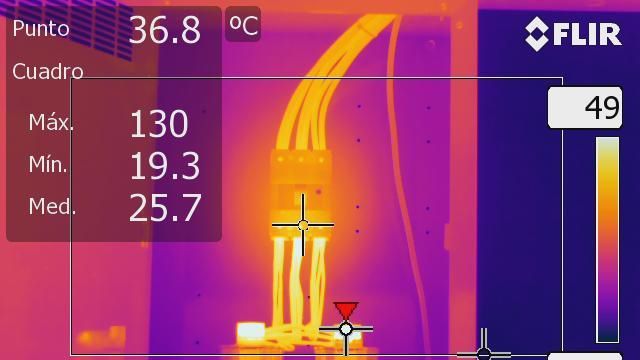Thermography
(Diagnosis with Infrared Technology)

What does thermography do?
Infrared thermography is a method that converts the emission pattern of an object into an image that can be seen.
All cameras analyze infrared radiation emanating from the surface under study, which includes radiation that is emitted, reflected and, sometimes, transmitted.
Thermography
(Diagnosis with Infrared Technology)

Distribution boards
These are panels where electrical energy is distributed from a main source to different circuits or equipment within a facility. They allow the protection, control and monitoring of the flow of electricity in each branch of the system.
Electrical Substations and Switchgear
Electrical substations are facilities that transform and distribute electricity, while switchgears are equipment that control, protect and isolate different parts of the electrical system, ensuring its safety and reliable operation.
Processes where the temperature parameter intervenes
CCMs are systems that control and protect multiple electric motors from a single location. Direct current (DC) and alternating current (AC) motors are equipment that converts electrical energy into mechanical energy, being essential in industrial and automation applications.
CCM's and DC and AC Motors
It refers to any industrial or electrical process in which temperature plays an important role, such as thermal regulation in ovens, cooling in air conditioning systems or heat control in electrical equipment to avoid overheating and damage.



